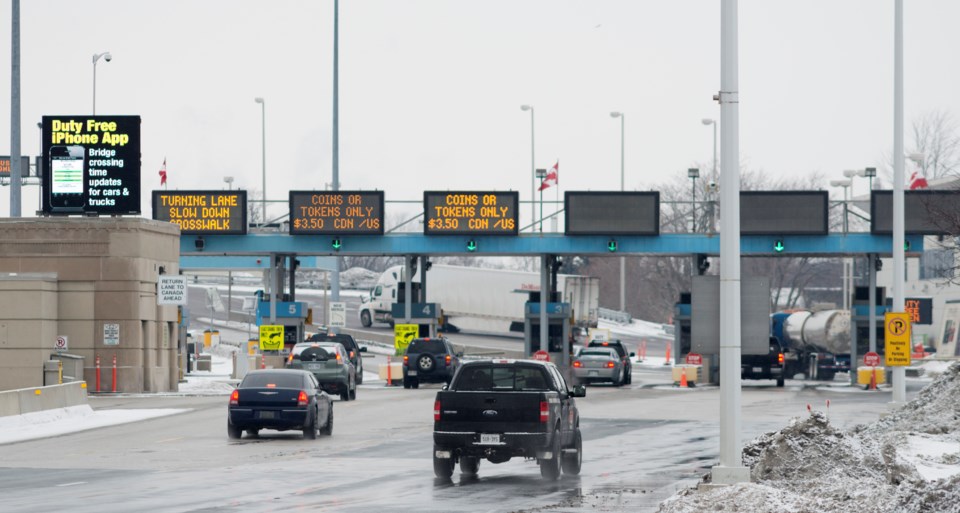A border monitoring system coming to Sarnia that will detect passing vehicles with Bluetooth technology raises serious questions about government surveillance, a privacy advocate warns.
The system could be up and running at the Blue Water Bridge as early as this fall, the first in a border crossing rollout by the Ontario Ministry of Transportation.
The ministry, which will install and pay for the Border Advisory System, said its only purpose is to estimate vehicle wait times at the border and share that information with motorists on overhead highway signs and the Internet.
But others are wary.
“It does raise privacy concerns,” said David Christopher of OpenMedia.ca, an organization that works to protect the privacy of Canadians.
“There is something inherently invasive about a device that tracks someone’s MAC address, and the way this is using Bluetooth to automatically track people’s devices.”
The Ministry said vehicle tracking stations will be set up on Highway 402 poles approaching the bridge to read the unique MAC (Media Access Control) address found in every Bluetooth device.
Other detection devices called “loops” installed beneath the pavement will determine a vehicle’s travel speed to assess a projected wait time at the border.
“It’s an anonymous identifier, so the MAC addresses aren’t really identified with any specific user account,” said Ministry spokesperson Astrid Poei.
“The MAC address is not linked to any specific person through any database, so it minimizes privacy concerns.”
Nor will the information gathered be kept for more than 60 minutes, she added.
Questions about border surveillance and domestic spying arose earlier this year when the CBC reported that Communications Security Establishment Canada had used airport Wi-Fi to follow the movements of thousands of Canadian travellers.
Chief John Forster told a Senate security committee Feb. 3 that CSEC hadn’t snooped on Canadians, saying the agency used airport Wi-Fi to capture “a snapshot of historical metadata.”
Christopher notes that like the new border system coming to Sarnia, CSEC tracked MAC addresses in cell phones, iPads and other devices. The difference is the Ministry doesn’t intend to store the information it collects in databases.
“It does seem they have addressed some of the concerns people would have,” Christopher said.
“But most people won’t have any knowledge that this is happening to them. It certainly doesn’t make the privacy concerns about this go away.”
The Blue Water Bridge between Point Edward and Port Huron, Michigan is the second busiest land border crossing in North America.
The busiest border crossing, Windsor - Detroit, is expected to receive the Bluetooth tracking technology in 2015.
- George Mathewson
